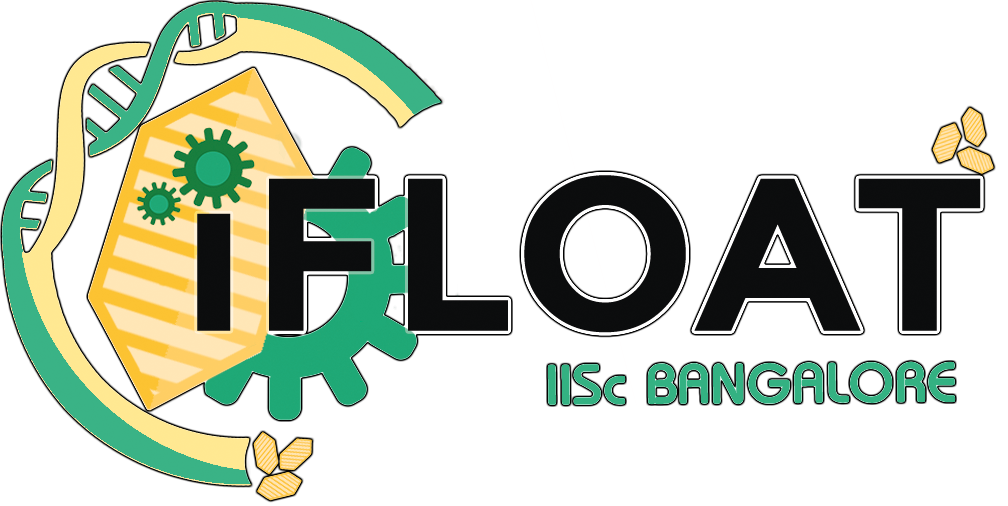
The Road to GCODe
This page illustrates how our designs and ideas evolved over the course of the months we spent working on GCODe. We used the resources of the Indian Institute of Science, setting up our device in bio labs, talking to biology professors, instructors, and students, who gave us some wonderful feedback and ideas, as you will see.
Growth Curves
We discover the pain of running growth curves, over and over. A little investigating and talking to our professors helps us realise how much time and researcher effort is spent running these things around the world.
Cases and Holders
Box
It is settled. Our hardware team decides to build an automated optical density meter. Arguments reign over whether it should be a cylinder or a cuboid. Cuboid wins because it is easier to make out of a flat sheet of acrylic.

3-D
All gung-ho, we print a test tube holder at the Centre for Product Design and Manufacturing (CPDM), IISc, at great expense (in theory - CPDM is kind enough to let us do it for free). Mr. Srinivasan from CPDM points out we don’t need it and there are simpler ways to hold the LED in place. We switch to laser cutting everything: the device becomes much cheaper and more accessible.

Yeast and Dilution
The iGEM wet lab team, at this point, is working on yeast, which grows to very high ODs, which can’t be measured directly. They point out to us that automatic dilution will be a very useful feature. We agree.
Plans are made for GCODe versions going all the way up to 4, including adding all sorts of chemical reagents and measuring everything under the sun. Reality sets in. Version 2 becomes the Pro.
Fluid Traffic Control
7-Way Connector
Undergraduate Biology Instructor Dr. T. Srinath points out that we need to maintain sterility in the Pro and not let the pipes get clogged with stray cells. We decide to flush the system with ethanol. Our beautiful 7-way 3D printed tube connector has to be junked, because the ABS plastic is not ethanol-compatible. We switch to using medical tubing connectors since they are already biocompatible.

Multiplexing
Oh, the horror of trying to close off pipes with cheap little motors! First we try pinching them shut. Then we try kinking them shut with a revolver barrel-like cylinder. Turns out, with great style comes great friction. The reason it’s so hard is that we are trying to multiplex all the pipes in one place, so we can cut costs by using only one peristaltic pump. Eventually we decide to use separate servos and stopcocks to close off each pipe. This makes it easy to control each pipe electronically.

Fixing the Readings
Current Drift
Professor Rajan from Electronics points out we need a current driver for our LED. This immediately fixes the horrible fluctuations in readings which threatened to sink our project.
Calibration
Professor Sai Siva Gorthi of the Optics and Microfluidics Lab assuages our worries about the OD not matching the spectrophotometer by pointing out that our optical parameters are different (in Beer-Lambert’s Law), so all we need is for our reading to be proportional.
Sampling
Pump
Flow Cytometry expert William Telford reminds us that the peristaltic pump is volumetric, so we can simply run the pump for a set time interval to dilute our sample with an exact quantity of water - this is great news!
Needle
We consider using fancy and really expensive cuvettes with pipe fittings to hold our sample in front of the LED and carry it away. Dr. Moumita Koley from the Chemistry Department suggests we simply use a needle and syringe to fill the cuvette! We save hours of work, and hundreds of dollars, at the cost of some embarassment that we didn’t think of it ourselves.
Interface
Ping!
The Graphical User Interface is ready! The Mini is finally usable by biologists! Dr. Srinath suggests sending a notification to your phone when the OD reaches the desired level - a brilliant idea! We immediately implement this using Pushbullet.

Extend
Dr. Neha Bahl, Undergraduate biology Instructor, asks for a simple and immensely useful feature: the ability to to extend the growth curve at the press of a button after viewing the real-time graph on her phone. We implement it pronto.
Way Forward
Dr. Neha Bahl points out the utility of a version with two test tube slots, so that comparisons can be run automatically. Professor Sai Siva Gorthi suggests implementing different wavelengths so that we can run GCODe for longer without the optical density saturating. We don’t have time to implement these ideas before the Jamboree, but just you wait!
Oh, you don't want to wait? Want to build your own? Head over to Build Your Own for all the gory details on how to build, set up and calibrate your very own GCODe Pro or Mini!












